Inspired by Granny, Duo Make & Sell Traditional Cookware that Use Less Oil, Gas
Bengaluru-based friends Revathi Venkatesh and Suma VS started Ajjiya Aramane (Grandmother's Palace) to sell traditional cookware like kal chetti and thayir jadi.
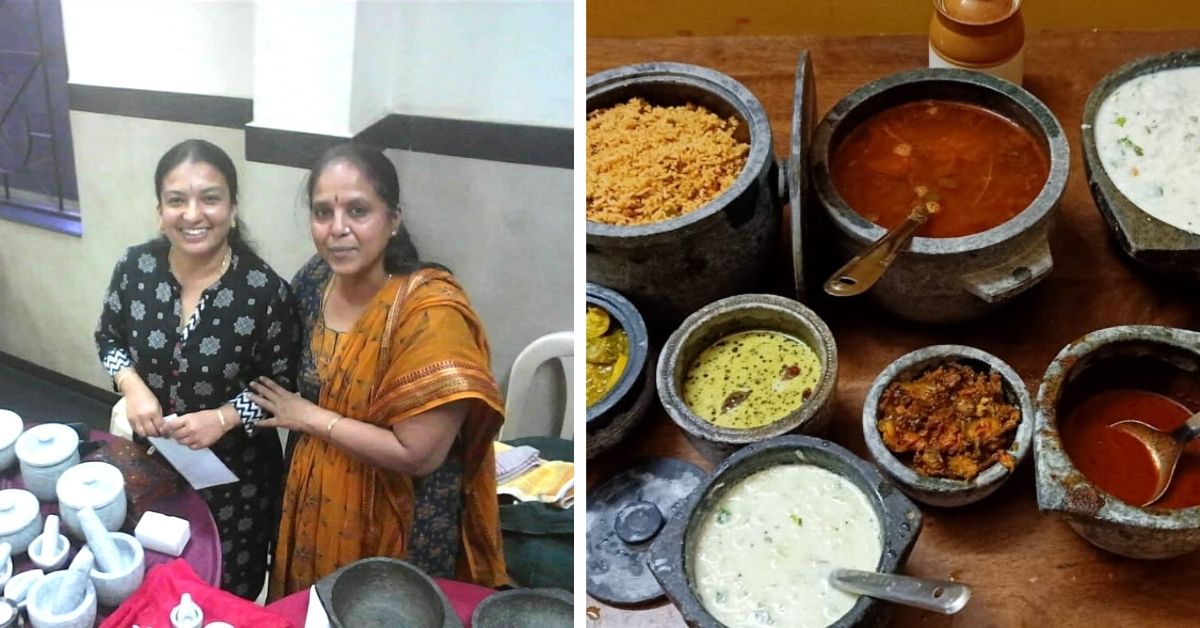
Revathi Venkatesh (47) and Suma V S (56) became friends because of their love for good food. In their quest to find new recipes and whip up new dishes, Revathi came across her grandmother’s old kal chetti (stoneware dish) in the attic. Given that it was lying there for almost three decades, Revathi and Suma spent some time researching on how to season it and start using.
Speaking to The Better India, Revathi says, “Finding the kal chetti was the turning point for us – both for our friendship and as a beginning of a professional relationship. What immediately pulled us to it was just how pretty and sturdy it was. We learnt how to ‘season it’ and I still remember the first time I cooked in it – the end result was pure magic. It reminded everyone of the taste of my grandmother’s food.”
Until then even though Revathi was diligently following her grandmother’s recipes, she always felt that there was something missing. “Finding that missing piece was like hitting the jackpot,” she quips. She continues, “While I always liked to cook, the kal chetti just enhanced the experience of cooking and eating.”
On A Quest To Make Food Taste Better

“We were both so excited with the kal chetti that we started researching other traditional cookware and looking for places to procure it from,” says Revathi. Adding to this Suma says, “At that time there was no vendor in Bengaluru dealing with it, and that was how we decided to travel to other places in the South to find what we were looking for. It also gave us the opportunity to travel and honestly, we enjoyed it.”
While the intention was to get cookware for their own personal use, soon their immediate friend circle started asking for it as well and that was how the idea of the business came about. Revathi says, “With an initial investment of Rs 30,000, we took a plunge to become entrepreneurs. We named it Ajjiya Ajamane (Grandmother’s Palace) as a tribute to my grandmother whose kal chetti started it all.”
Currently, the brand receives up to 25 orders each month and is making 3x revenue year-on-year.
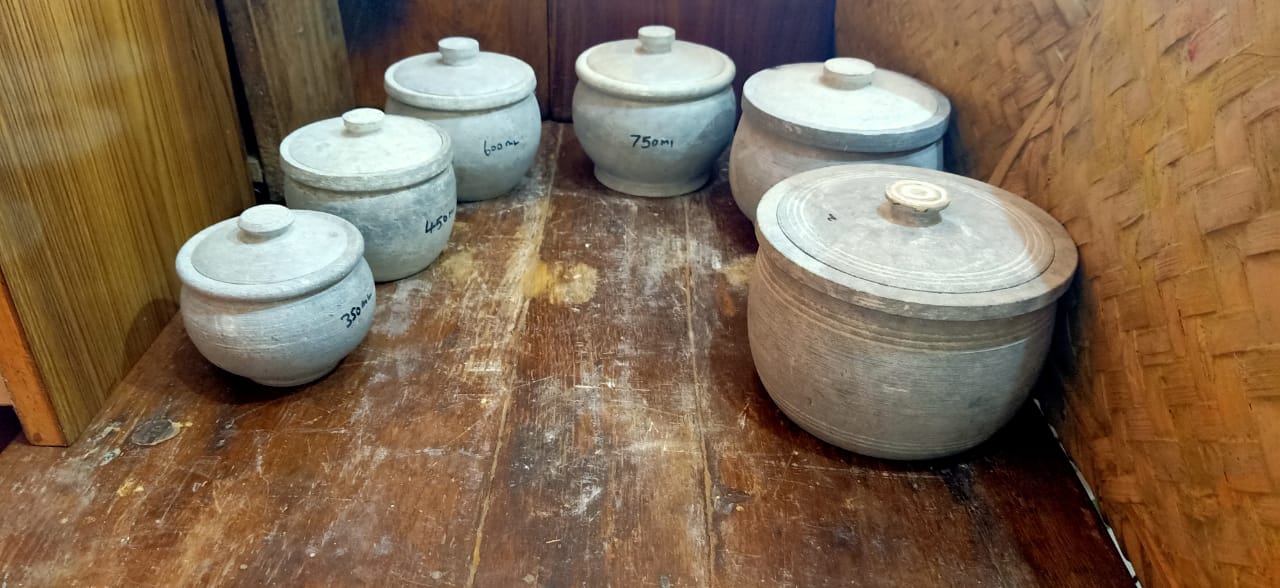
It started with a handful of friends who became clients. The flavour of the food cooked in these traditional cookware is what helped the duo increase their customer base. While the cookware was procured from various vendors the seasoning of these products is all done by Revathi and Suma.
“The process of seasoning is very integral to this using these products – if not seasoned properly there is always a chance of it cracking when placed on heat and therefore we ensure that we do the seasoning ourselves,” adds Suma.
The process of seasoning is a labour intensive one and needs close to 25 days.
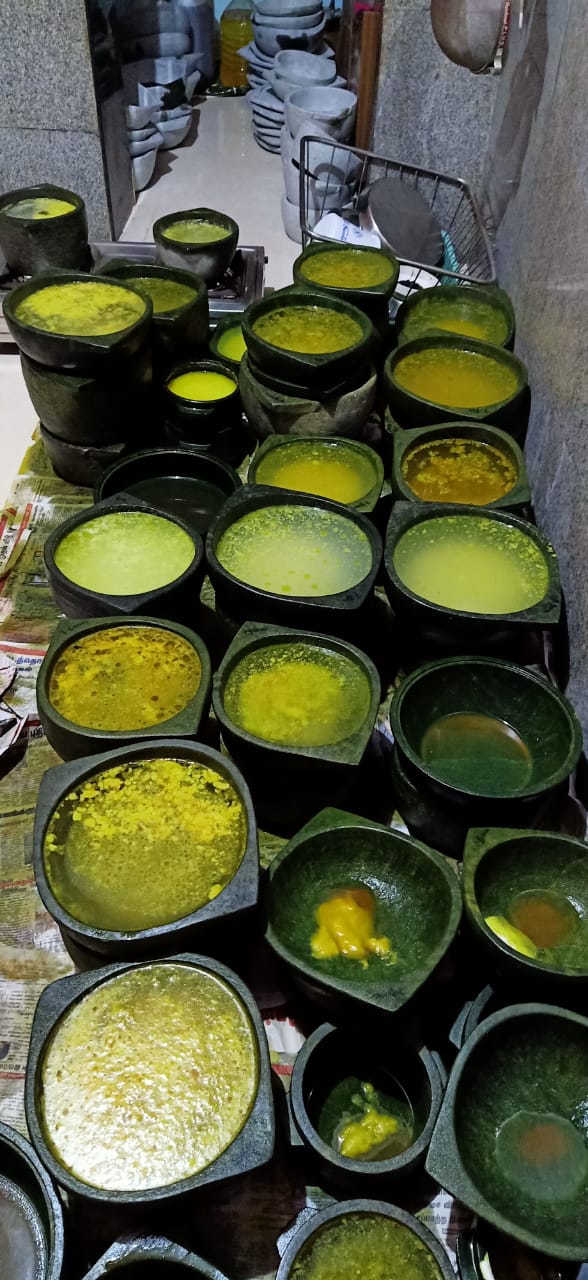
Explaining the process, Revathi says, “Each utensil needs to be coated with castor oil and turmeric and left out in the sun. Once the turmeric starts to dry out it will begin to peel and after three days the same process is repeated. This is done for nine consecutive days. If done during summer the process is faster else takes longer. Then we use rice kanji (porridge) to fill the utensil and leave it out in the sun. This is also repeated three times. Then we wash the utensil and fill it with water and place it on the gas stove on low flame. We boil the water two or three times to finally ensure the utensil is ready for use.”
Each utensil that is shipped undergoes this seasoning process and only then is certified as ready to use.
Expanding One Product At A Time
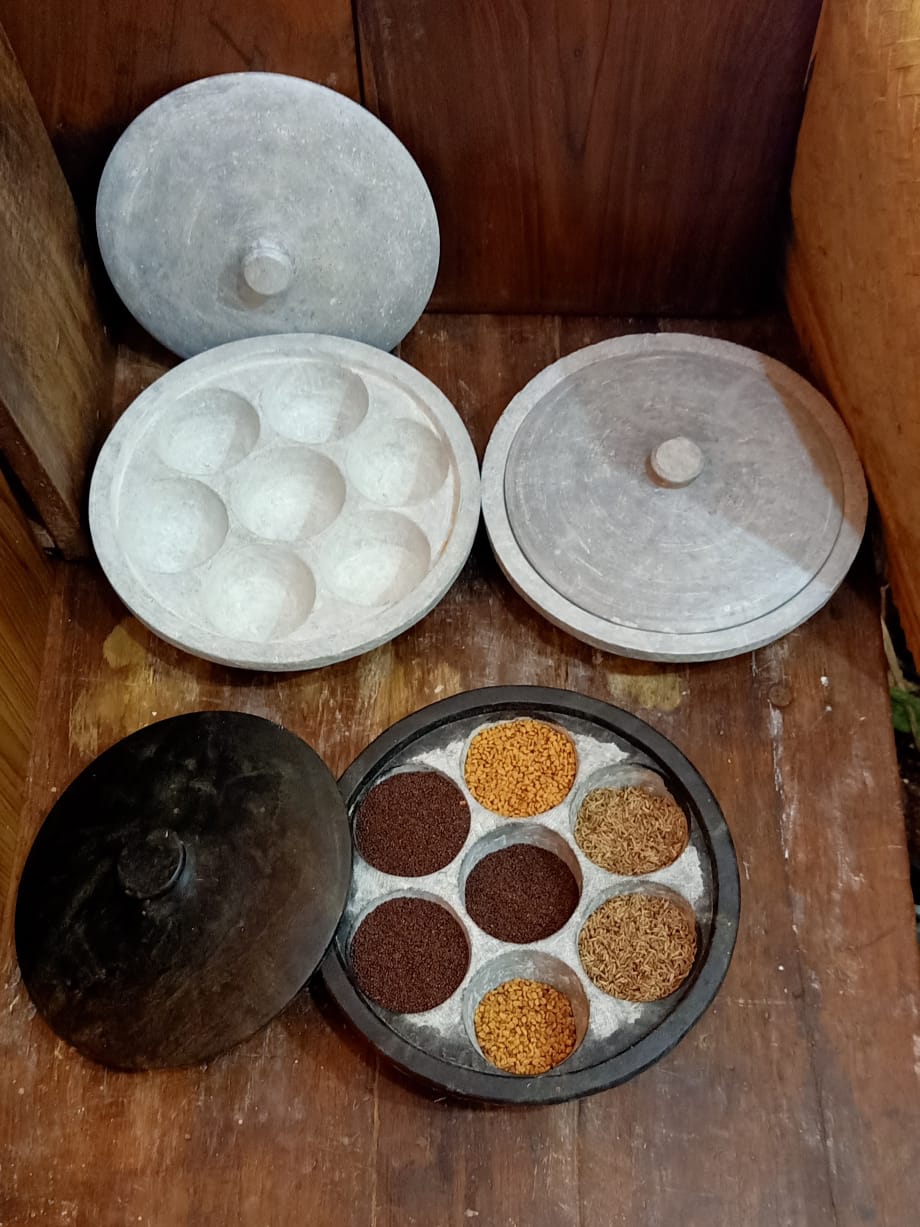
With the demand for the kal chetti going strong, the duo decided to diversify and include more products as well. Revathi says, “We started taking a keen interest in designing the products as well and came up with the idea of introducing a chapati box with a lid. This took a while but the designs were well appreciated and people started placing their orders for it. Then we introduced the masala box as well.”
Various design elements were also added. “We wanted to find a way to revive the traditional cookware while giving it some modern design elements,” says Suma. At Ajjiya Aramane one can get a variety of cookware from basic utensils to make everyday food like dal, sambar, rasam, rice etc., to also stock pans to make dosa, appams and uttapams. Another unique utensil they stock is the curd setter called Thayir Jadi (Curd jar).
So far, more than 3,000 products have been shipped to various parts of India and the US.
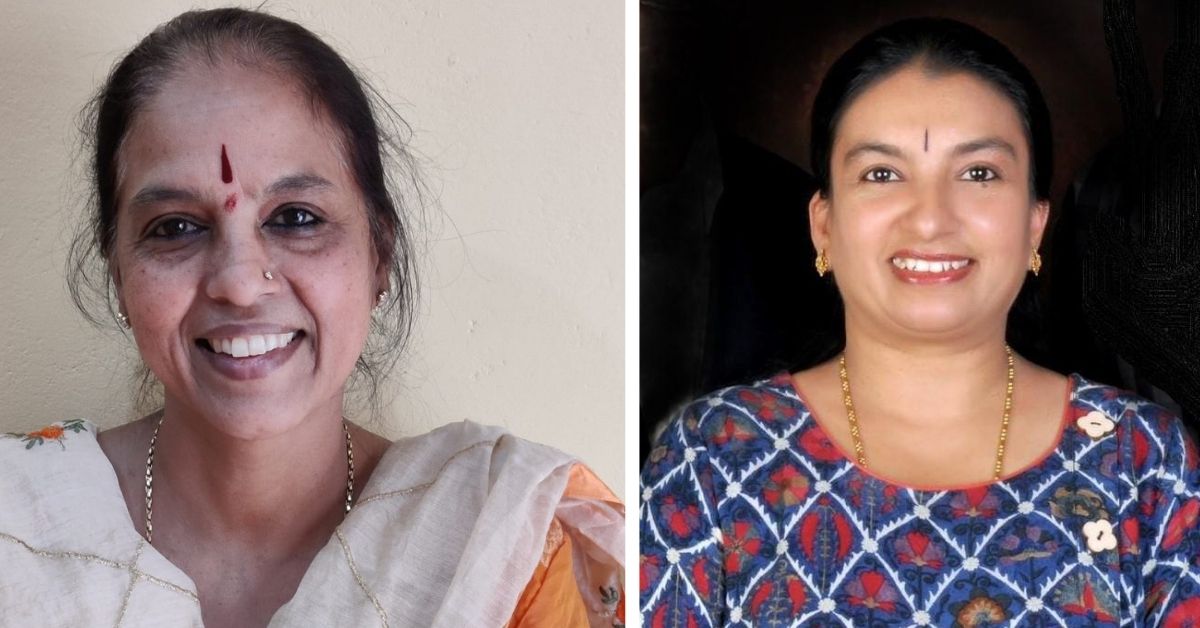
“This is a unique utensil because of its properties,” says Revathi. She goes on, “When curd is set and kept in it you can leave the jar outside without the fear of the curd turning sour or stale. Even the way it sets is so thick that you can scoop out the curd from it.” The cost for a 300 ml utensil starts at Rs 450 and goes upwards depending on the size of the utensil.
The most expensive product currently available at Ajjiya Aramane is the 4 litre utensil, which comes with a lid and handle priced at Rs 5,400.
Suma and Revathi work directly with the artisans, which eliminates the middlemen completely.
Suma adds, “It was not easy to diversify. Most of the vendors were set in their ways and not necessarily open to experimentations. What we were asking them to make was also pushing them out of their comfort zones and that took a while. Even to get one design finalised after all the back and forth and design iterations took us close to one year.”
Few pointers when using this cookware:

1. Once the dish you are making is 3/4th cooked the heat can be switched off and the dish will cook in the residual heat very well. This saves on gas.
2. For those keen on following the slow-cooking method the traditional cookware is the best. This method helps in retaining the nutrients in the food.
3. It is very easy to clean and maintain this cookware. All you need is used coffee decoction powder or tea leaves, which can be used to scrub the utensil clean.
4. This cookware can be used on glass top stoves, hobs and also on induction plates without any trouble.
To reach out to Ajjiya Aramane and place an order, you can click here.
(Edited by Yoshita Rao)
If you found our stories insightful, informative, or even just enjoyable, we invite you to consider making a voluntary payment to support the work we do at The Better India. Your contribution helps us continue producing quality content that educates, inspires, and drives positive change.
Choose one of the payment options below for your contribution-
By paying for the stories you value, you directly contribute to sustaining our efforts focused on making a difference in the world. Together, let's ensure that impactful stories continue to be told and shared, enriching lives and communities alike.
Thank you for your support. Here are some frequently asked questions you might find helpful to know why you are contributing?


This story made me
-
97
-
121
-
89
-
167














